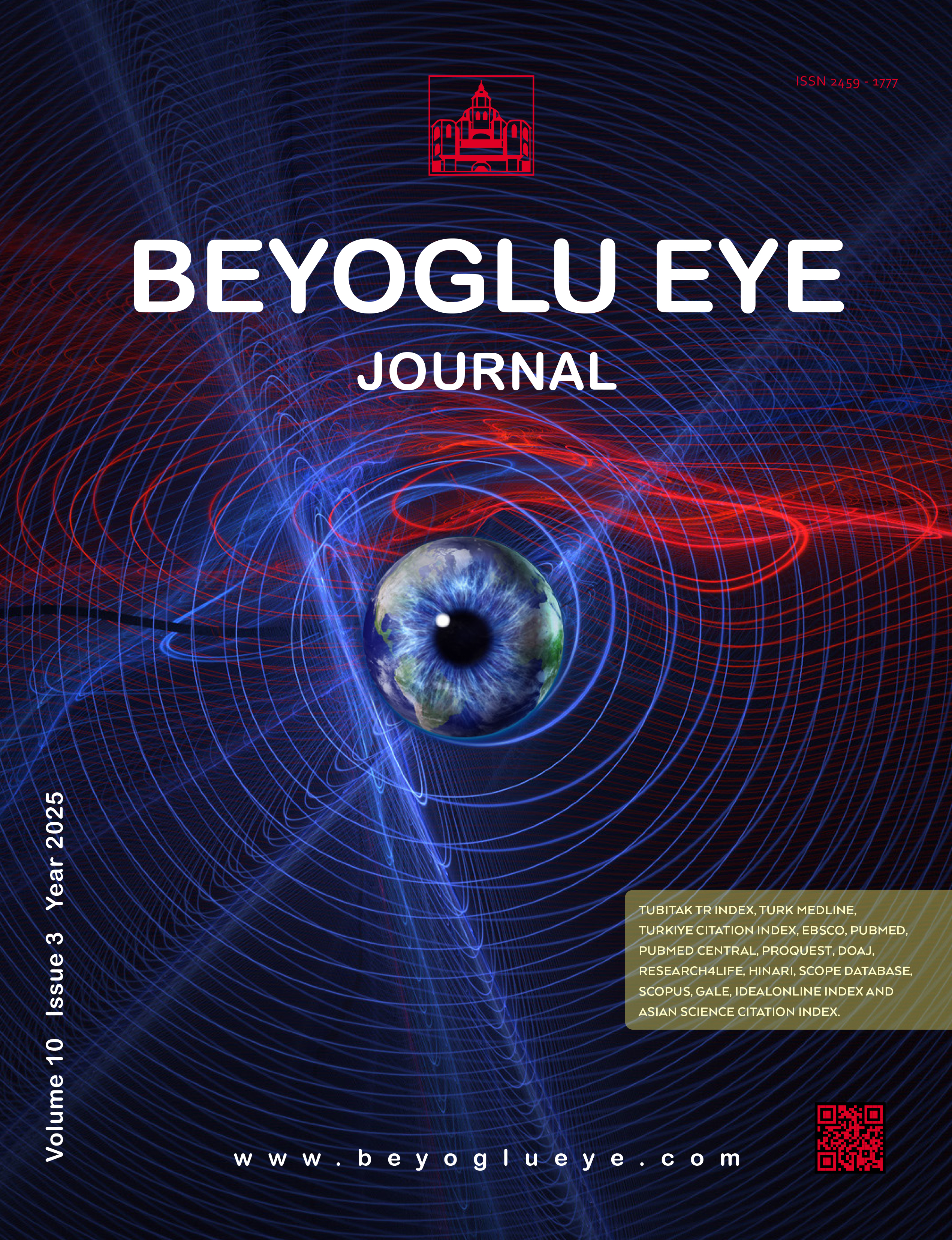
Static and Dynamic Pupil Characteristics in Myopic Anisometropic Amblyopia
Hasan Kiziltoprak1, Kemal Tekin2, Esat Yetkin3, Mehmet Ali Sekeroglu41Department of Ophthalmology, Bingol Women's Health and Children's Hospital, Bingol, Turkey2Department of Ophthalmology, Ercis State Hospital, Van, Turkey
3Department of Ophthalmology, Midyat State Hospital, Mardin, Turkey
4Department of Ophthalmology, Ankara Ulucanlar Eye Training and Research Hospital, Ankara, Turkey
INTRODUCTION: The purpose of this study was to compare static and dynamic pupillometry measurements in patients with myopic anisometropic amblyopia with those of age-matched, healthy subjects.
METHODS: This prospective, cross-sectional study consisted of 29 patients with myopic anisometropic amblyopia and 83 control subjects. While both the amblyopic eye and the fellow eye of patients with myopic anisometropic amblyopia were examined, data were only recorded for the right eye of the subjects in the control group. Static pupillometry measurements determined included the scotopic pupil diameter (PD), mesopic PD, low photopic PD, and high photopic PD. Subsequently, dynamic pupillometry measurements were obtained, including the resting diameter, amplitude of pupil contraction, latency of pupil contraction, duration of pupil contraction, velocity of pupil contraction, latency of pupil dilation, duration of pupil dilation, and velocity of pupil dilation.
RESULTS: In the myopic anisometropia patients, there was a statistically significant difference in the low photopic PD and high photopic PD values of the amblyopic eyes and the corresponding fellow eyes compared with the healthy subjects (p<0.05 for each). These parameters of low photopic PD and high photopic PD were similar between the highly myopic eyes and the fellow eyes. There was no statistically significant difference in the mesopic or scotopic PD values between any of the groups (p>0.05 for each). There were no significant differences in the dynamic pupillometric measurements between the study and control eyes.
DISCUSSION AND CONCLUSION: These results confirm that amblyopia is a binocular disorder. The dynamic pupillary responses were similar in the highly myopic and fellow eyes, indicating that evaluation of relative afferent pupillary defects may not be a useful test to differentiate amblyopic eyes from healthy corresponding eyes.
Keywords: Amblyopia, dynamic pupillometry, myopic anisometropia, static pupillometry.
Manuscript Language: English









